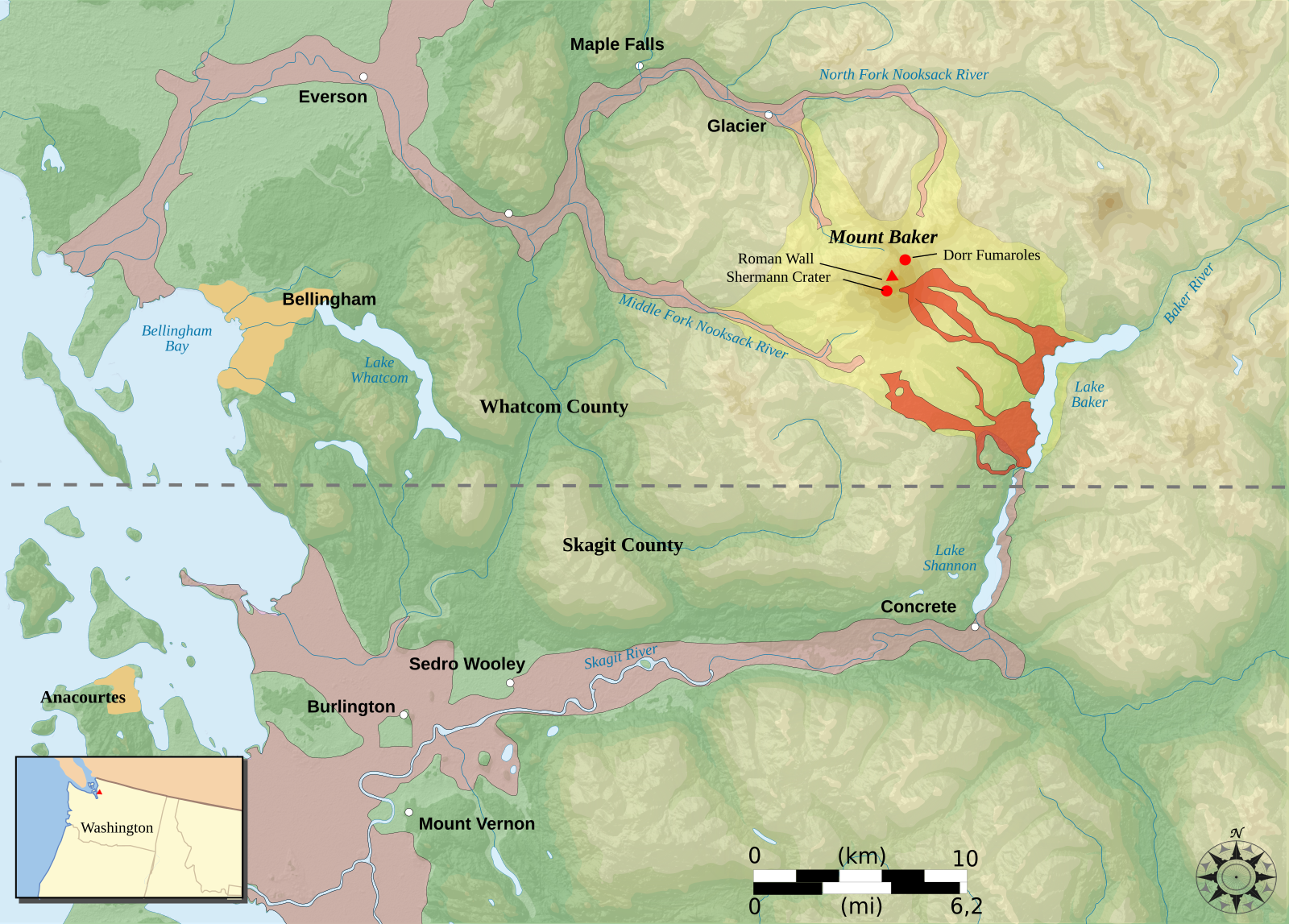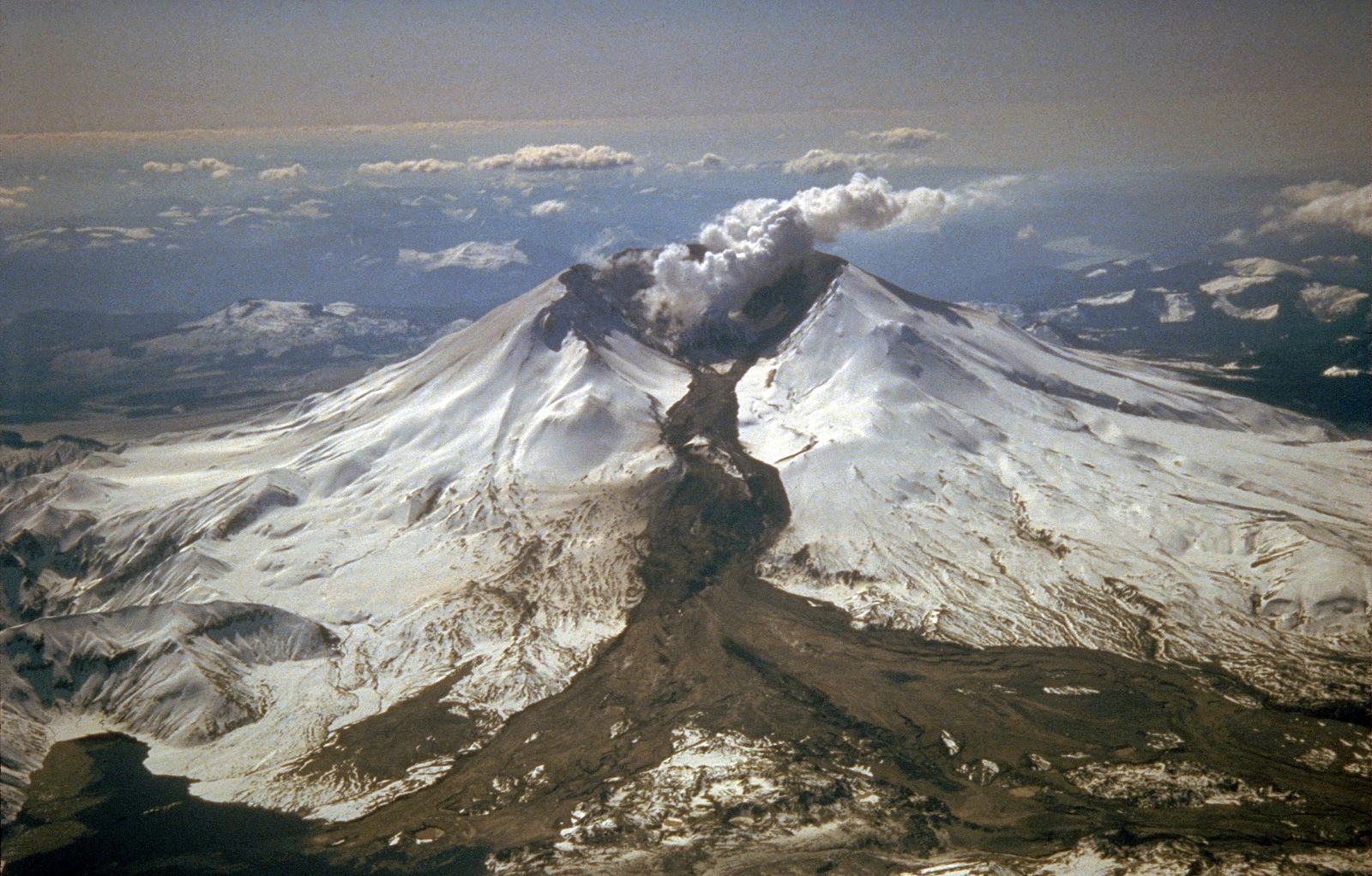Edexcel Specification focus:
‘Volcanic hazards include lava flows, pyroclastic flows, ash falls, gas emissions and secondary hazards such as lahars and jökulhlaups.’
Volcanic hazards can be deadly and varied, arising from both explosive and effusive eruptions, with secondary effects that often cause greater devastation than the eruption itself.
Primary Volcanic Hazards
Volcanic hazards originate from volcanic eruptions, which are either explosive (high viscosity magma, gas-rich) or effusive (low viscosity, gas-poor).
Lava Flows
Lava flows are streams of molten rock that pour from an erupting vent.
Lava Flow: Molten rock that flows along the ground from a volcanic vent during an effusive eruption.
Usually associated with basaltic eruptions, especially at constructive plate boundaries or hotspots like Hawaii.
Can travel several kilometres but are relatively slow-moving.
Despite their low threat to human life due to their predictability and speed, they destroy everything in their path.
Pyroclastic Flows
Pyroclastic flows are fast-moving, ground-hugging avalanches of hot gas, ash, and volcanic debris.
Pyroclastic Flow: A mixture of hot gases, ash, and volcanic rock that moves rapidly down the sides of a volcano.
Occur during explosive eruptions, especially at destructive plate boundaries.
Can exceed speeds of 100 km/h and temperatures of 700°C.
Extremely lethal due to their speed and temperature; they obliterate settlements, forests, and infrastructure.

Hazard map for Mount Baker, Washington, showing (in brown) the proximal pyroclastic flow and lava flow zone, and (in yellow/orange) the lahar inundation zones. Source
Ash Falls
Ash falls, or tephra, consist of fragments of volcanic rock and glass expelled into the atmosphere during an eruption.
Ash is carried by wind and can spread hundreds of kilometres from the eruption site.
Causes respiratory issues, building collapse from accumulation, and disrupts air travel.
Can destroy crops and contaminate water supplies.
Volcanic Gas Emissions
Volcanoes emit a variety of gases, including carbon dioxide (CO₂), sulphur dioxide (SO₂), water vapour, and hydrogen sulphide (H₂S).
Gas emissions can lead to acid rain, harming ecosystems and agriculture.
CO₂ emissions, particularly from volcanic lakes, can displace oxygen and asphyxiate humans and animals, as in the 1986 Lake Nyos disaster.
Secondary Volcanic Hazards
Secondary hazards often occur after the initial eruption and can be triggered by the deposition of material or by the interaction of volcanic matter with water and weather systems.
Lahars
Lahars are volcanic mudflows composed of water and volcanic debris.
Lahar: A destructive mudflow on the slopes of a volcano, composed of pyroclastic material, rocky debris, and water.
Can be triggered by rainfall mixing with loose volcanic ash, or melting snow and ice during eruptions.

Lahar flows from the March 1982 eruption of Mount St. Helens. The dark, fast-moving mudflow carries ash and volcanic debris down river valleys, demonstrating the erosive power and reach of lahars. Source
Travel quickly down river valleys, engulfing settlements.
Particularly common on snow-covered stratovolcanoes such as Mount Rainier or Nevado del Ruiz.
Notable Characteristics:
Density and speed make them highly destructive.
Can continue to pose risks for months or years after an eruption.
Jökulhlaups
Jökulhlaups are sudden glacial outburst floods caused by volcanic activity beneath ice sheets or glaciers.
Jökulhlaup: A sudden and massive flood of meltwater from a subglacial volcanic eruption.
Common in volcanic regions such as Iceland.
Occur when magma melts glacial ice, forming meltwater that accumulates in subglacial lakes.
When the pressure becomes too great, water bursts out with immense force, causing flooding and landscape change.
Additional Secondary Effects
In addition to lahars and jökulhlaups, volcanic eruptions can trigger a range of other secondary hazards:
Fires: Caused by lava or pyroclastic flows igniting vegetation and buildings.
Building Collapse: Accumulated ash can collapse roofs, especially during rainfall when ash becomes heavier.
Water Contamination: Ash and gas emissions can pollute rivers, lakes, and groundwater.
Climate Impacts: Large eruptions may release enough SO₂ to reach the stratosphere, leading to global cooling. The 1991 Mount Pinatubo eruption reduced global temperatures by about 0.5°C.
Factors Affecting the Nature of Volcanic Hazards
Magma Composition and Viscosity
The silica content of magma affects its viscosity:
Basaltic magma (low silica) is runny and results in gentle lava flows.
Andesitic and rhyolitic magma (high silica) is viscous, traps gases, and causes explosive eruptions.
Plate Boundary Type
Different tectonic settings influence the nature of volcanic hazards:
Constructive boundaries: Typically produce basaltic lava flows (e.g. Mid-Atlantic Ridge).
Destructive boundaries: Associated with violent eruptions, pyroclastic flows, and ash falls (e.g. the Andes).
Hotspots: Can form both effusive and explosive eruptions, depending on the crust type (e.g. Hawaii vs. Yellowstone).
Topography and Climate
Steep-sided volcanoes (e.g. stratovolcanoes) encourage pyroclastic flows and lahars.
High rainfall and snow accumulation increase the risk of lahars and jökulhlaups.
Human Impact and Risk Management
Exposure and Vulnerability
Communities living near volcanoes are at high risk, especially in LICs (Low-Income Countries) where monitoring and evacuation systems may be poor.
Urbanisation on volcano slopes (e.g. Naples near Mount Vesuvius) increases exposure to pyroclastic flows and ash falls.
Mitigation and Adaptation
Monitoring systems for gas emissions, ground deformation, and seismic activity improve eruption forecasting.
Evacuation planning, hazard mapping, and education programmes reduce vulnerability to primary and secondary hazards.
Engineering solutions, such as diversion channels for lahars and lava flows, can reduce property damage.
Volcanic hazards, both primary and secondary, vary greatly depending on the eruption type, location, and local conditions. Understanding these hazards is essential for reducing risk and improving resilience in vulnerable communities.
FAQ
Pyroclastic flows are dense, ground-hugging currents of hot gas, ash, and volcanic debris that travel rapidly down volcano slopes, destroying nearly everything in their path.
Pyroclastic surges, on the other hand, are less dense and more turbulent. They are capable of moving over obstacles like ridges or hills and can reach areas that pyroclastic flows might not.
Surges often spread more widely and can be even more unpredictable due to their lower density and ability to follow more complex topography.
Lahars can occur months or even years after an eruption due to the accumulation of loose volcanic ash and debris on steep slopes.
Triggering factors include:
Heavy rainfall mixing with loose volcanic material
Melting snow or ice from geothermal heat
Breach of crater lakes or glacial dams
Communities downstream may be affected repeatedly during rainy seasons, especially in tropical or mountainous regions, requiring long-term monitoring and preparedness.
Iceland has a unique combination of volcanic activity and glacial coverage, especially over central volcanoes like Katla and Grimsvötn.
Jökulhlaups are dangerous because:
Subglacial eruptions are often hidden from view, delaying warnings
Sudden releases of meltwater can destroy bridges, roads, and farms
Floods can carry boulders, ice blocks, and debris over long distances
Rivers may rise rapidly without visible signs of eruption, posing risks even far from the source.
Volcanic gases like sulphur dioxide (SO₂) and hydrogen sulphide (H₂S) can cause acid rain when they mix with atmospheric moisture.
This can lead to:
Acidification of lakes and rivers, harming aquatic life
Soil degradation, affecting agriculture
Long-term damage to forests and infrastructure
Carbon dioxide (CO₂), being heavier than air, can accumulate in valleys and cause suffocation of humans and animals, even without visible volcanic activity.
Stratovolcanoes are most commonly linked to lahars due to their steep slopes, explosive eruptions, and often snow-capped peaks.
Key reasons include:
Steep gradient accelerates flow of water and debris
Explosive eruptions generate large volumes of ash and pyroclastic material
Snow and ice rapidly melt during eruptions, adding water to flows
Examples include Mount Rainier (USA), Nevado del Ruiz (Colombia), and Mount Pinatubo (Philippines).
Practice Questions
Question 1 (3 marks)
Name three primary volcanic hazards and briefly describe each one.
Question 1 (3 marks)
Award 1 mark for each correct hazard named and briefly described. Maximum 3 marks.
Lava flows – Molten rock flowing from a volcanic vent (1 mark)
Pyroclastic flows – Fast-moving, hot clouds of gas, ash, and volcanic rock (1 mark)
Ash falls – Volcanic ash ejected into the air that settles over a wide area (1 mark)
Accept other valid primary hazards from the specification (e.g. gas emissions).
Descriptions must show some understanding beyond just naming.
Question 2 (6 marks)
Explain how secondary volcanic hazards can be more destructive than primary hazards. Use examples in your answer.
Question 2 (6 marks)
Level 1 (1–2 marks): Basic understanding with limited explanation; may list secondary hazards with little elaboration or relevance to destruction.
Level 2 (3–4 marks): Some explanation of why secondary hazards are destructive, possibly using an example, though may lack clarity or depth.
Level 3 (5–6 marks): Clear explanation with well-developed points and appropriate examples; shows understanding of processes and impacts.
Indicative content may include:
Lahars bury settlements and move rapidly down river valleys, often long after the eruption.
Jökulhlaups cause sudden, massive flooding from subglacial meltwater.
Secondary hazards can occur without warning and affect areas far from the volcano.
Example: The 1985 Nevado del Ruiz eruption caused a lahar that killed over 20,000 people, showing greater impact than the eruption itself.
Allow other valid examples and explanations that show the destructive potential of secondary hazards.

